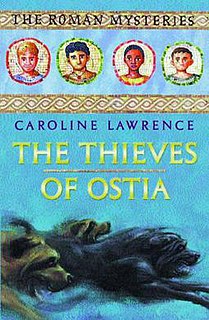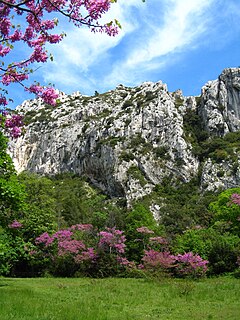
Legio XIV Gemina was a legion of the Imperial Roman army, levied by Julius Caesar in 57 BC. The cognomen Gemina (Twinned) was added when the legion was combined with another understrength legion after the Battle of Actium. The cognomen Martia Victrix was added sequentially following their service in the Pannonian War c. AD 9 and the defeat of Boudicca in AD 61. The emblem of the legion was the Capricorn, as with many of the legions levied by Caesar.

Legio X Gemina, was a legion of the Imperial Roman army. It was one of the four legions used by Julius Caesar in 58 BC, for his invasion of Gaul. There are still records of the X Gemina in Vienna in the beginning of the 5th century. The legion symbol was a bull. Early on in its history, the legion was called X Equestris (mounted), because Caesar once used the legionaries as cavalry.

Legio XIII Gemina, in English the 13th Twin Legion was a legion of the Imperial Roman army. It was one of Julius Caesar's key units in Gaul and in the civil war, and was the legion with which he famously crossed the Rubicon on January 10, 49 BC. The legion appears to have still been in existence in the 5th century AD. Its symbol was the lion.

Gehyra is a genus of geckos in the family Gekkonidae. They are known as web-toed geckos or dtellas, and most species within the genus bear close resemblance to geckos from the genus Hemidactylus.

The Roman Mysteries is a series of historical novels for children by Caroline Lawrence. The first book, The Thieves of Ostia, was published in 2001, finishing with The Man from Pomegranate Street, published in 2009, and 17 more novels were planned, plus a number of "mini-mysteries", spin offs and companion titles.
The comitatenses and later the palatini were the units of the field armies of the late Roman Empire.

Legio VII Gemina was a legion of the Imperial Roman army. It was raised in AD 68 in Hispania by the general Galba to take part in his rebellion against the emperor Nero. "Gemina" means the legion was dedicated to the legendary twin founders of Rome, Romulus and Remus, who were suckled by a she-wolf. The legion was deployed in the city called Legio in AD 74 and remained in Hispania to the end of the 4th century.

The Santa Barbara Zoo is located on 30 acres (12 ha) near the ocean in Santa Barbara, California. It was built on the site of what was known as the Child Estate. The zoo has been ranked numerous times as one of the nation's best small zoos. It has more than 500 animals in numerous exhibits, including capybara and California condors, and is famous for having had a giraffe with a crooked neck. It also features a few non-animal attractions, such as the 2 ft narrow gauge Zoo Train, complete with a pair of Chance Rides C.P. Huntington locomotives. The zoo first opened in August 1963.

Gémenos is a commune located 20 kilometers east of Marseille in the Bouches-du-Rhône department in the Provence-Alpes-Côte d'Azur region in southern France.

Gehyra oceanica, also known as the Oceania gecko or Pacific dtella, is a species of gecko in the genus Gehyra. The larger Gehyra vorax of Fiji, Vanuatu and New Guinea has sometimes been included in this species, but is now treated as distinct.

Gehyra australis, the Australian house gecko, northern dtella or top-end dtella, is a species of gecko native to northern and eastern Australia. It is also widespread in Indonesia, alongside common house geckos and four-clawed geckos.

The dubious dtella, dubious four-clawed gecko, or northern dtella is a species of gecko in the genus Gehyra, native to Northeastern Australia. It might also occur in the Louisiade Archipelago of Papua New Guinea. It is found in a variety of habitats, including acacia and eucalyptus woodlands, and on house walls, also in urban areas.

The Banda Island dtella is a species of gecko in the genus Gehyra, native to the Banda Islands.

The Borroloola dtella is a species of gecko in the genus Gehyra. It is endemic to Australia.

The Palau Island dtella is a species of gecko. It is endemic to the Palau Islands.
The Kimberley Plateau dtella is a species of gecko endemic to Western Australia.
Gehyra serraticauda is a species of gecko endemic to Western New Guinea in Indonesia.
The Northern Kimberley gecko is a species of gecko in the genus Gehyra. It is endemic to Western Australia.

Roman Widow or Dîs Manibus is an oil on canvas painting executed in 1874 by the English Pre-Raphaelite artist Dante Gabriel Rossetti. It is in the collection of the Museo de Arte de Ponce in Puerto Rico.












